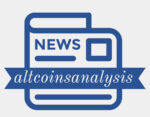Ripple Makes a Splash in the Stablecoin Market: A Challenger Emerges
Ripple, the blockchain company renowned for its international payments network, announced its entry into the $150 billion stablecoin market earlier this year. This move pits Ripple against established players like Tether (USDT) and Circle (USDC), but what makes Ripple’s offering unique?
What is a Stablecoin?
For the uninitiated, stablecoins are cryptocurrencies pegged to a real-world asset, most commonly the US dollar. Unlike traditional cryptocurrencies known for their price volatility, stablecoins aim to provide price stability, making them ideal for transactions and a bridge between the fiat and crypto worlds.
Ripple’s Stablecoin: Trust and Transparency Take Center Stage
Ripple’s stablecoin, pegged 1:1 to the US dollar, promises to be a “compliance-first” offering. Backed by a reserve of US dollar deposits, short-term US Treasuries, and other secure cash equivalents, Ripple emphasizes transparency. Regular audits by third-party accounting firms and monthly attestation reports will detail reserve holdings, fostering trust among users.
Why is Ripple Entering the Stablecoin Arena?
Analysts see several motives behind Ripple’s move. Firstly, it’s a strategic entry into a rapidly growing market segment. Stablecoins are attracting significant institutional interest due to their price stability, making them suitable for various financial applications. Secondly, a successful stablecoin launch could bolster the XRP Ledger, Ripple’s native blockchain. Increased use of the stablecoin could translate to more activity on the XRP Ledger, benefiting the entire ecosystem. Finally, a robust stablecoin could further Ripple’s goal of bridging the gap between traditional finance and decentralized finance (DeFi).
Ripple vs. The Competition: Can the Newcomer Compete?
Tether (USDT) and USD Coin (USDC) currently dominate the stablecoin market. Tether boasts the largest market share, but controversies regarding its reserve backing have cast a shadow over its credibility. USDC, issued by a consortium including Circle and Coinbase, is seen as a more transparent option. Ripple’s stablecoin aims to compete by offering a combination of:
- Transparency: Regular audits and public attestations aim to build trust.
- Compliance: The focus on regulatory adherence could attract institutions wary of less-regulated stablecoins.
- Technology: Leverage the XRP Ledger’s speed and scalability for efficient transactions.
What Does the Future Hold for Ripple’s Stablecoin?
The success of Ripple’s stablecoin will depend on several factors. Building trust through transparency and regulatory compliance will be crucial. Additionally, widespread adoption by financial institutions and integration with crypto exchanges and DeFi platforms will be essential for growth.
The Ripple Effect: Will it be a Game Changer?
Only time will tell if Ripple’s stablecoin disrupts the market. However, its entry signifies the growing recognition of stablecoins as a vital component of the evolving financial landscape. With its focus on trust, compliance, and leveraging RippleNet’s established network, Ripple’s stablecoin has the potential to be a significant player in the years to come.

